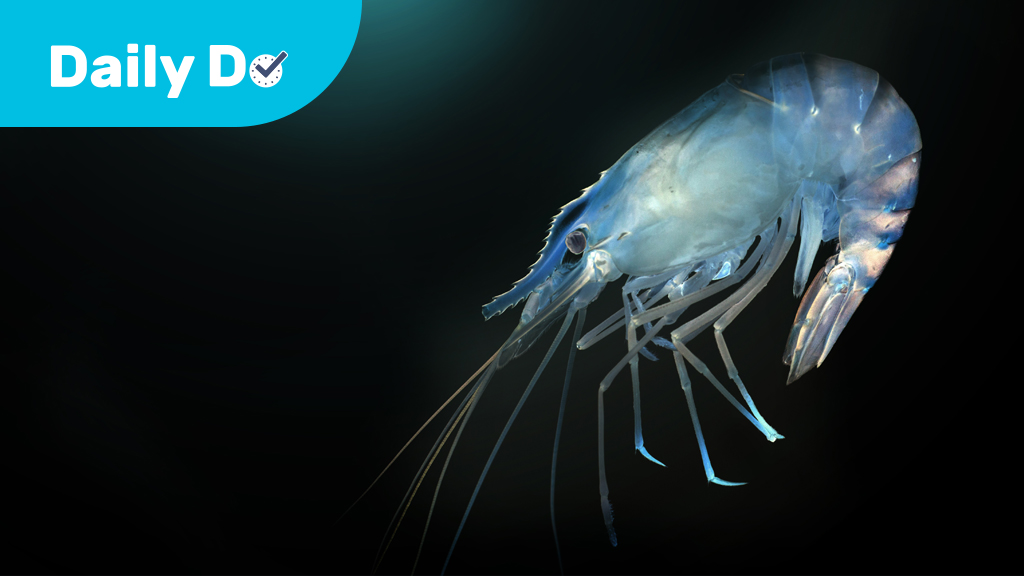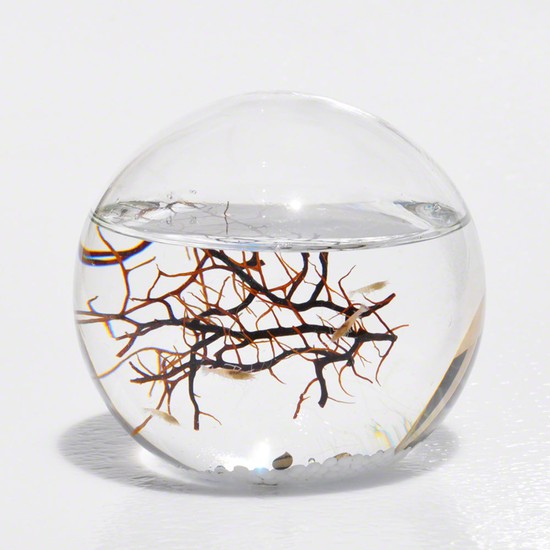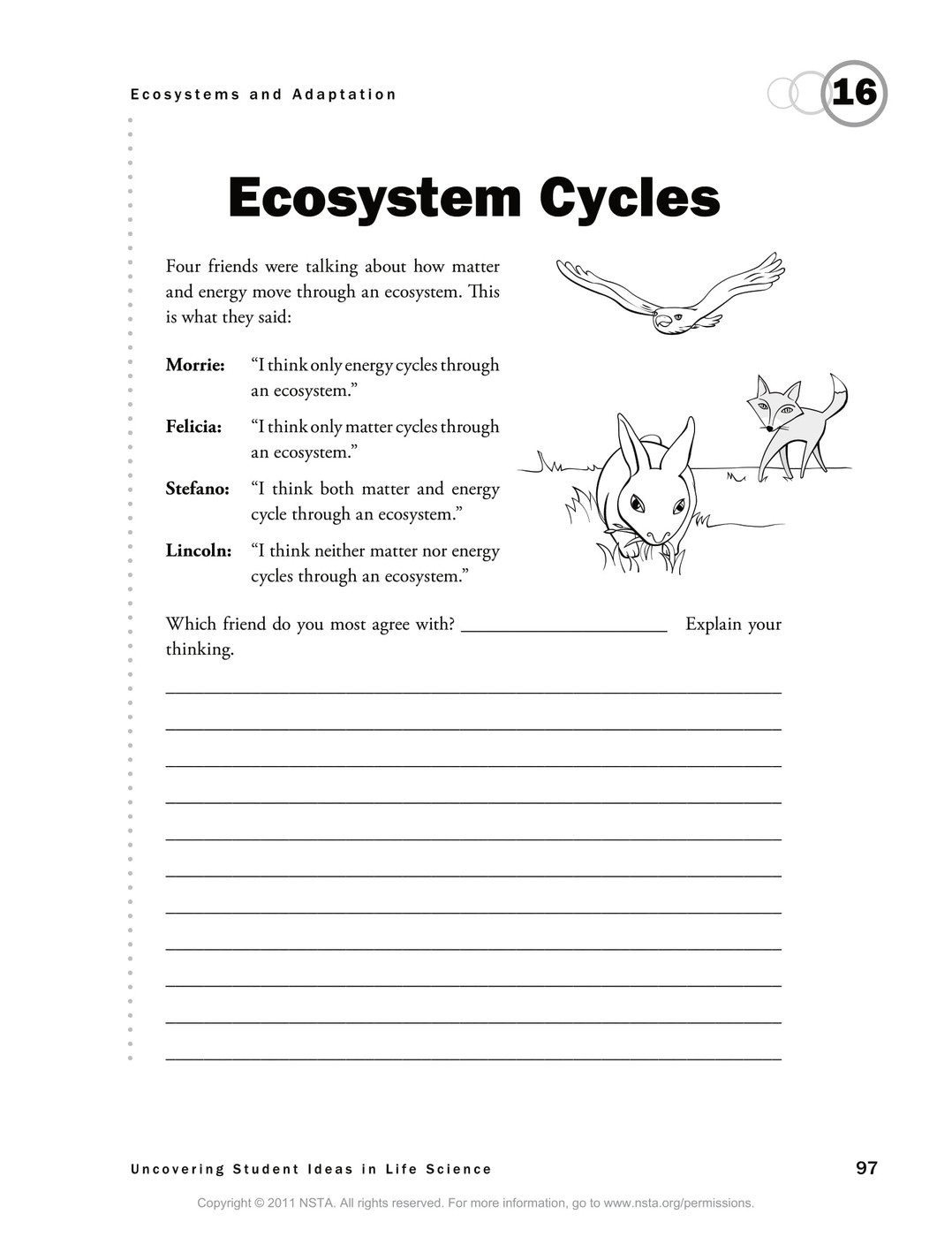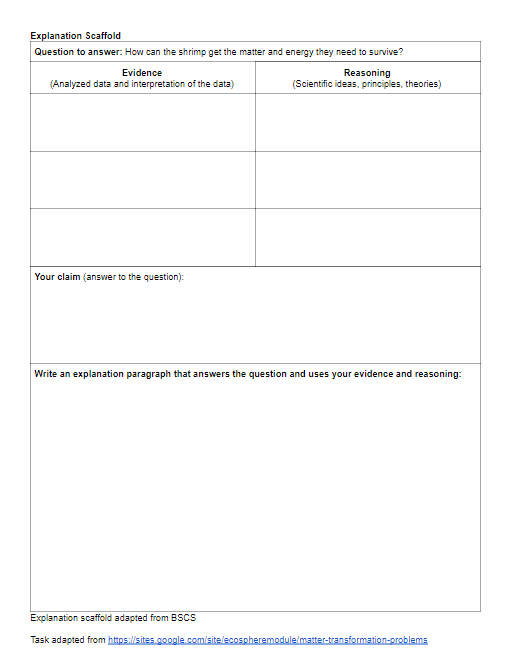Middle School High School | Daily Do
How Do Shrimp Live in a Closed System?

Crosscutting Concepts Disciplinary Core Ideas Environmental Science Is Lesson Plan Life Science NGSS Phenomena Physical Science Science and Engineering Practices Three-Dimensional Learning Middle School High School Grades 6-8 Grades 9-12
Welcome to NSTA's Daily Do
Teachers and families across the country are facing a new reality of providing opportunities for students to do science through distance and home learning. The Daily Do is one of the ways NSTA is supporting teachers and families with this endeavor. Each weekday, NSTA will share a sensemaking task teachers and families can use to engage their students in authentic, relevant science learning. We encourage families to make time for family science learning (science is a social process!) and are dedicated to helping students and their families find balance between learning science and the day-to-day responsibilities they have to stay healthy and safe.
Interested in learning about other ways NSTA is supporting teachers and families? Visit the NSTA homepage.
What Is Sensemaking?
Sensemaking is actively trying to figure out how the world works (science) or how to design solutions to problems (engineering). Students do science and engineering through the science and engineering practices. Engaging in these practices necessitates that students be part of a learning community to be able to share ideas, evaluate competing ideas, give and receive critique, and reach consensus. Whether this community of learners is made up of classmates or family members, students and adults build and refine science and engineering knowledge together.
Introduction
By middle school, students are coming to understand that organisms rely on their ecosystems to provide the matter and energy needed to survive. Students begin to make sense of how matter and energy move through ecosystems and how to use food web models to represent these movements. Today's task, How do shrimp live in a closed system?, provides an opportunity for students and their families to engage in science and engineering practices and use science ideas to make sense of how the marine shrimp in an EcoSphere (closed system) can get the matter and energy they need to survive.

Many people express their love of living things by maintaining aquaria that range from simple fishbowls to highly complex reef systems. Some of these can require intensive maintenance to ensure that organisms have what they need to thrive. In contrast to the typical home aquarium, ecospheres are designed to sustain the included organisms with no inputs (except sunlight) or outputs and do not require maintenance. An ecosphere can be constructed as a DIY project or purchased commercially. EcoSphere Closed Ecosystems, as shown in the photograph and video above, are commercial products that enclose filtered seawater, algae, bacteria, and marine shrimp in glass spheres. The video shows shrimp in an EcoSphere that have survived for 17 months (so far).
Note: EcoSphere is a commercial product. We use the term ecosphere to refer to any closed ecosystems (glass or plastic container with airtight lid).
Presentation of Phenomenon (What Am I Exploring Today?)
Initial Sensemaking: Ecosystem Cycles
You can prompt students’ thinking about the movement of matter and energy in ecosystems by using the “Ecosystem Cycles” formative assessment probe from Uncovering Student Ideas in Life Science, Volume 1. (You can learn more about using formative assessment probes by reading the “Why Is My Shadow Always Changing?” Daily Do.) These probes are best used in three steps.
- Use the probe to activate students’ prior knowledge.
- Engage students in experiences during which they acquire evidence and new information.
- Have students use what they discovered to revisit, revise, and extend their initial thinking.

In this case, students will acquire evidence from the data analysis task.
Share the Ecosystem Cycles probe with your students. Read through the probe with students, or give them time to read through it. Have students share their initial answers and reasoning. If you are working with multiple students, it might be helpful to have them write down their initial responses before sharing. Prompt students to clarify their thinking, but be careful not to reveal the explanation at this point. Ask students to relate their ideas to the shrimp inside the EcoSphere. Then tell them, "We are going to look at some data that will help us figure out how matter and energy move in the EcoSphere."
Analyzing and Interpreting Data: EcoSphere Data Analysis
Ask students to examine the data carefully and look for patterns that can help them understand and explain how the shrimp obtain the matter and energy they need to survive. Point out to students that the final column in each data table jumps from Day 30 to Day 100, so it represents a longer time span than in the previous columns. You can use the following questions to prompt student thinking, and students may need to obtain information through online research to support their sensemaking.
- For each water quality factor listed in the first column of the data tables, why is that factor important to the organisms living in the EcoSphere?
- What do the numbers in the Acceptable Range column mean? What might happen when values are outside of this range?
- For each water quality factor, describe any patterns you see in the data for that factor as time passes. Are the values increasing, decreasing, staying the same, or going up and down?
- For each scenario in which a component was removed from the system, why did removing that component lead to the observed changes in the water quality data?
Students should notice the following patterns. These patterns point to roles that each group of organisms plays in the system and to the interactions among living (biotic) and nonliving (abiotic) components of the system.
- With all components present in the EcoSphere, turbidity, oxygen, and carbon dioxide levels fluctuate slightly but remain within acceptable limits over time.
- When algae are removed from the system, oxygen levels decline well below the acceptable value.
- When bacteria are removed from the system, turbidity levels increase beyond the acceptable range, oxygen levels increase over time, and carbon dioxide levels seem to be slightly lower than normal.
- When shrimp are removed from the system, turbidity levels decrease and then stabilize, oxygen levels increase, and carbon dioxide levels remain stable, but seem to be slightly lower than normal.
After students analyze the data, revisit the Ecosystem Cycles probe. Give students time to reread and respond to the probe. Then have students share their responses and thinking. At this point, you want to press students to use evidence from the data to justify their explanations. If a student is committed to an explanation other than Felicia’s, then urge them to revisit the evidence.
The best answer is Felicia’s: “I think only matter cycles through an ecosystem.” Matter and energy both move through an ecosystem. However, only matter cycles back and forth between organisms and the environment; energy moves only in one direction, with much of it being dissipated into the environment as heat. Both matter and energy can be transferred from one organism to another or from an organism to the environment, but only matter cycles within ecosystems, being used in various forms as it moves through food webs, water, soil, and the atmosphere.
Developing a Model and Explanation: How Can the Shrimp Get the Matter and Energy They Need to Survive?
Now that students have built knowledge by analyzing the data and possibly conducting online research, you will want to support them in applying this knowledge to answer the guiding question by developing a model of the EcoSphere system and constructing an explanation of how the shrimp get the matter and energy they need to survive. See pages 3 and 4 of the Surviving Inside the EcoSphere handout.

NSTA has created a How do shrimp live in a closed system? collection of resources to support teachers and families using this task. If you're an NSTA member, you can add this collection to your library by clicking Add to My Library, located near the top of the page (at right in the blue box).
Check Out Previous Daily Dos From NSTA
The NSTA Daily Do is an open educational resource (OER) and can be used by educators and families providing students distance and home science learning. Access the entire collection of NSTA Daily Dos.


